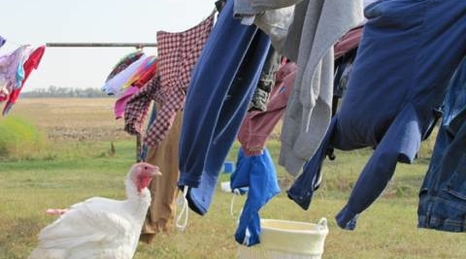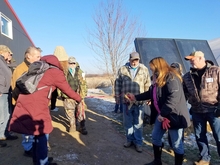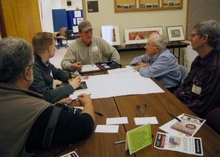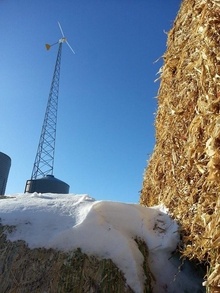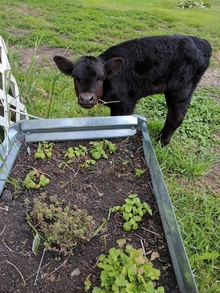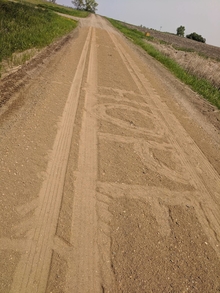In honor of Earth Day 2022, University of Minnesota Extension Regional Sustainable Development Partnerships (RSDP) Assistant Statewide Director Caryn Mohr sat down with Statewide Director Kathy Draeger to get Kathy’s thoughts on our work related to climate change.
Earth Day 2022 falls on April 22, and this also happens to be the year that RSDP celebrates our 25th anniversary. When you look back at RSDP’s work over the years, what do you see as our role related to climate change?
First, happy anniversary to the Partnerships! I am grateful to the founders who had a vision for how communities and their University of Minnesota could be a force for sustainable development. Thank you.
In regards to climate change, many of the Partnerships’ projects address climate change without even having to name or debate it. It might be developing a watershed plan or testing a new biochar system or creating a network of organic material processing sites. The projects vary, but their local benefit is clear and they bring people together to make an impact.
For example, our deep winter greenhouse work originated from community members in Southwest Minnesota. Carol Ford and Chuck Weibel were experimenting with ways to grow vegetables in the winter without a lot of fossil fuels, and we partnered with them to share what they were finding. Interest in the technology snowballed. Do deep winter greenhouses address climate change? Absolutely—by decreasing food miles for winter produce and through storage of solar thermal energy. But ‘climate change’ language didn’t enter our conversations. Farmers and University researchers just came together around shared interests in local foods and energy conservation.
RSDP talks about the importance of bringing community wisdom into the University. Where does community wisdom fit into the science of climate change?
I’m really proud of how we have provided a channel for local wisdom to inform University research. Innovative solutions like deep winter greenhouses originated in the community, and then University researchers started testing and iterating on the design.
Community observations have also filled important gaps in scientific research. Several years ago the Southwest RSDP board had a very active board member, farmer Sunny Ruthchild. At the time we were partnering with Climate Generation and former Extension climatologist Mark Seeley to host climate convenings around the state. Sunny was active in bringing one of these convenings to the Southwest Research and Outreach Center in Lamberton.
At the event, Dr. Seeley shared the scientific data. He spoke of rising heat indexes, warmer winters and concurrent increases in the severity of heavy rain events and droughts. Sunny shared that she had a water-collection system to capture rainwater from the roofs on her farm to water her orchard. In the summer, despite having no rain, her water catchment continued to fill up. She wondered, How could that be? Well, one of the impacts of climate change is increasing humidity, which in her case was condensing on the metal rooftops and flowing into the rainwater collection system. This impact of higher humidity was an interesting insight on farmstead effects of climate change and an adaptation that otherwise might not have been noticed. This event, like so many of our projects, drove home the importance of multiple ways of knowing—from scientific data to lived farm experience.
Since those climate convenings hosted by RSDP in 2015, the world seems to have become more polarized. Do you have any concerns about today’s climate change dialogue?
I deeply love and appreciate the academy–it’s a second home to my heart and a mighty fine intellectual base–but I get impatient when I see a lot of talk about climate change without action. It’s critical to have those conversations and debate policy solutions, but we need to make sure we aren’t only talking about things. We can debate until we are blue in the face, write letters, sign petitions, attend meetings and conferences–and all may be important–but ultimately none of that will make a difference until we actually change our behavior. We need to take steps in our lives today.
That begs the question, What steps are you taking in your life?
My family farms in rural Big Stone County on the western part of the state. We planted more than half our farm with perennials for grazing our grass-fed beef. We now have the highest soil carbon levels on our farm under those paddocks. What this means is that we are sequestering atmospheric carbon in the soil. We also restored a 30-acre wetland and upland and used the payment we received for putting that land in a permanent conservation easement to install wind power on our farm.
We heat our house with a wood boiler in our backyard to make use of the many dozens of standing dead trees on our farmstead. These trees were planted decades ago and emit carbon naturally as they decompose, so we are just decomposing them faster with fire. We have spent many happy October days as a family cutting, splitting and stacking wood. We replace those trees by planting more tree stands on our farm, including edible bushes like hazelnuts, elderberries and chokeberries to name a few.
These are big steps we are able to take based on where we live, but we have also incorporated smaller everyday practices to lower our carbon footprint. For example, we use a clothesline outdoors and a fold-out drying rack indoors. We strictly limit our purchases of any ‘stuff’ including clothes. The rule for years has been that our kids get $100 per year for new clothes and unlimited budget for used clothing from thrift stores. We raise a garden and preserve food–dehydrating, canning and freezing meat, fruit, vegetables and even eggs when the hens out produce our and our neighbors' need for eggs. We butcher chickens at home.
When my husband got a job off the farm last year, we bought a 2012 Chevy Volt that works perfectly for his commute. Our highest carbon footprint is in transportation. We have two high-schoolers who go to school 20 miles away and have jobs at the hospital and nursing home. Just this morning I put in an order for a few hundred gallons of gasoline. That’s a dramatic reminder that transportation fuel is our primary carbon footprint.
Your family has clearly given a lot of thought to how your everyday habits relate to climate change. What would you say to someone who maybe isn’t in that same place?
As passionate as I am about taking action on climate change, I feel strongly about respecting diversity of thought and circumstance. This gets to one of the reasons I love working with the Partnerships. We make room for many views, approaches and ideas at the table. Our projects help focus on a goal that people can work toward, above and beyond partisanship.
I get concerned when I hear someone criticized for their views if they are, in good faith, sharing their understanding of an issue. Change can happen when we are able to create safe spaces for sharing, learning and debate. I think a lot about whether I am approaching those conversations in a constructive way.
As an example, the transition to clean energy is not without some pain points. I’m proud of the Partnerships for listening to community concerns and responding without judgment. For example, some communities are concerned about large-scale solar projects and the industrialization of farmland. As a result, the Partnerships were part of a siting and planning project to better understand concerns and help site solar installations with a more sensitive approach. It’s not just to reeducate people about what they should do and see on the landscape, it’s to understand their perspective and look for potential solutions to solar siting.
With so much going on in the world, what gives you hope related to climate change?
When I see concrete examples of action, I feel hopeful. Working for the Partnerships, I am surrounded by empowered community members who take action every day. Take Northwest RSDP’s Bob Backman, for example, who buys vests at thrift stores so he can wear them around the house and keep the thermostat lower.
I’m really proud of the concrete actions advanced by the Partnerships. I could name 100 on-the-ground projects that have a real impact on mitigating and adapting to climate change–growing your own food, growing tree species from southern Minnesota to plant in northern Minnesota, helping farmers grow perennial crops like Kernza that can hold more carbon in the soil.
On a broader scale, it gives me hope when I see more and more acres of cover crops–a practice that involves planting a crop after harvest that holds soil in place, captures nutrients from entering water sources, and, hopefully, sequesters more soil carbon. Perhaps with more extreme weather, farmers are adapting to climate by planting more acres of cover crops as a response to what they are experiencing on their farms. I’m also encouraged to see more and more wind turbines and solar projects in western Minnesota where I live.
I am fortunate to be surrounded by farmers, community activists, volunteers and individual people around this state who are making conscious choices every day related to climate change. They don’t just give me hope, they inspire me.



